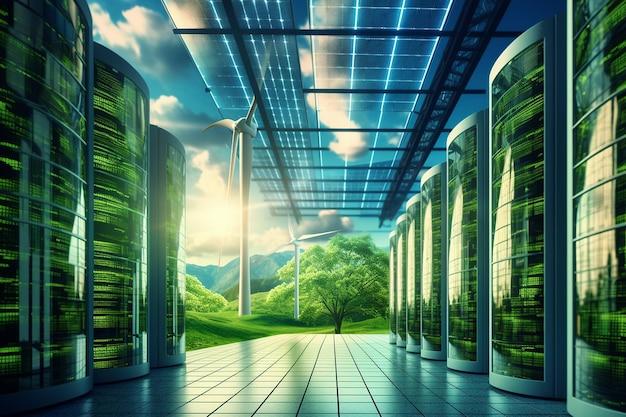Revolutionizing Sustainability: The Rise of Green Data Centers

Audio : Listen to This Blog.
In the age of digital transformation, where data is the new currency, the demand for data centers has surged exponentially. However, this growth comes at a cost – traditional data centers are notorious energy guzzlers, emitting significant carbon footprints. Enter the solution: Green Data Centers. These eco-friendly alternatives are not only reducing environmental impact but also paving the way for a sustainable digital future. Let’s delve into the world of Green Data Centers and discover how they’re shaping the tech landscape for the better.
Understanding Green Data Centers: An Eco-Friendly Oasis
Traditional data centers are synonymous with energy consumption, with cooling systems and power backups running 24/7. Green Data Centers, on the other hand, leverage renewable energy sources like solar and wind power to minimize their carbon footprint. Additionally, advanced cooling techniques such as liquid immersion cooling and hot aisle containment are employed to enhance energy efficiency.
Key Technologies Driving Green Data Centers Forward
In an era where technology and sustainability are increasingly intertwined, data centers stand at the forefront of environmental stewardship and innovation. The adoption of renewable energy sources, advanced cooling systems, and energy-efficient hardware illustrates the industry’s commitment to reducing its carbon footprint and enhancing operational efficiency. This comprehensive exploration into green data center technologies unveils the strategies and innovations driving the sustainable transformation of global data infrastructure.
Renewable Energy Integration
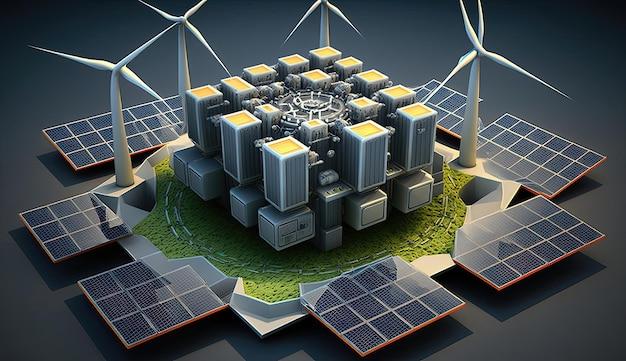
The integration of renewable energy sources into data center operations marks a significant step towards sustainable IT practices. Solar panels, wind turbines, and hydroelectric power offer viable alternatives to traditional fossil fuels, contributing to a substantial reduction in greenhouse gas emissions. By leveraging these clean energy sources, data centers not only diminish their environmental impact but also enhance their energy security and independence. The transition to renewables is further facilitated by technological advancements and decreasing costs of renewable energy technologies, making it a cost-effective solution for powering modern data centers.
In addition to environmental benefits, the adoption of renewable energy sources by data centers can lead to operational cost savings over time. Initiatives such as on-site solar farms or wind power generation can provide data centers with a direct supply of electricity, reducing dependency on the grid and exposure to fluctuating energy prices. Furthermore, utilizing renewable energy can improve a data center’s public image, aligning with corporate sustainability goals and meeting the growing demand from customers and stakeholders for greener services.
Advanced Cooling Systems
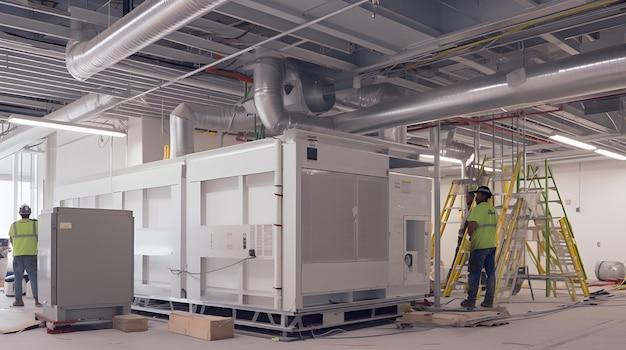
Traditional cooling methods in data centers, such as air conditioning and forced air cooling, are notoriously energy-intensive. However, recent innovations in cooling technology are setting new standards for efficiency. Liquid cooling systems, for instance, use conductive coolants to directly absorb heat from server components, offering a more efficient heat dissipation method compared to traditional air cooling. This direct contact approach significantly reduces the energy required for cooling, thereby lowering operational costs and enhancing the overall energy efficiency of the data center.
Intelligent airflow management systems represent another leap forward in optimizing data center cooling. Through the use of advanced sensors and controls, these systems can dynamically adjust cooling resources based on real-time data center conditions, such as temperature and server load. This smart allocation of cooling resources prevents overcooling and undercooling, ensuring that servers operate within optimal thermal conditions while minimizing energy consumption. The implementation of such advanced cooling solutions is crucial for data centers aiming to reduce their carbon footprint and achieve sustainability targets.
Energy-Efficient Hardware
The development of energy-efficient hardware is critical for greening data center operations. Modern servers, storage systems, and networking equipment are being designed to consume less power without sacrificing performance. Techniques, like improved electrical design, low-power processors, and energy-saving modes, help significantly reduce the energy demand for these devices. By investing in such hardware, data centers can lower their energy consumption rates, contributing to both environmental sustainability and reduced energy costs.
Furthermore, manufacturers are focusing on the lifecycle impacts of IT equipment, promoting longer use periods and recyclability to minimize waste. The push towards energy-efficient hardware is complemented by industry standards and certifications that guide data centers in selecting environmentally friendly equipment. This commitment to energy efficiency extends beyond just immediate power savings, fostering a holistic approach to sustainable IT infrastructure that prioritizes minimal environmental impact alongside technological innovation.
Virtualization and Consolidation

Virtualization technology has become a keystone of energy-efficient data center strategies. By allowing multiple virtual machines to run on a single physical server, virtualization maximizes resource utilization and significantly reduces the need for physical hardware. This consolidation leads to a direct decrease in the energy consumption associated with powering and cooling additional servers. Data centers utilizing virtualization can achieve higher densities of virtual servers, optimizing their infrastructure and making better use of available computing resources.
Consolidation through virtualization not only lowers energy usage but also reduces the physical space required for servers, leading to smaller and more efficient data center footprints. The flexibility offered by virtual environments enables IT administrators to quickly deploy, scale, or decommission virtual servers based on demand, further enhancing operational efficiency. By adopting virtualization and consolidation practices, data centers can achieve substantial energy savings, reduced costs, and a smaller environmental impact, all while maintaining high levels of service performance and reliability.
Energy Management Systems (EMS)
Energy Management Systems (EMS) play a pivotal role in optimizing energy consumption within data centers. These sophisticated systems utilize advanced sensors, meters, and software to continuously monitor energy usage across various data center components. By providing real-time visibility into energy consumption patterns, EMS enables operators to identify inefficiencies and implement targeted energy-saving measures. The insights gained from EMS analytics empower data centers to make informed decisions that improve energy efficiency, such as adjusting power settings, optimizing server loads, and retrofitting or replacing inefficient equipment.
Beyond immediate energy savings, EMS also facilitates long-term strategic planning for energy optimization. Automation features within EMS can dynamically adjust energy use in response to changing data center conditions, further enhancing efficiency and reducing manual workload. By integrating EMS into their operations, data centers can achieve a balance between operational demands and energy conservation, leading to lower utility bills, reduced carbon emissions, and a stronger commitment to sustainability
Modular and Containerized Data Centers
Modular and containerized data centers represent a shift towards more flexible, scalable, and energy-efficient data center designs. These pre-engineered and prefabricated structures are quick to deploy, allowing businesses to rapidly respond to IT capacity needs with minimal construction and site preparation. By design, modular data centers focus on maximizing the use of space and resources, incorporating highly efficient cooling systems and energy-efficient hardware that significantly reduce power consumption compared to traditional data center setups.
The scalability of modular and containerized data centers means that companies can start small and expand their data center capacity as needed, avoiding the energy waste associated with overprovisioning. This modularity also allows for the optimization of cooling and power systems for the specific size and load of the deployment, further improving energy efficiency. With their ability to be deployed closer to users, these data centers can also reduce the latency and energy loss associated with data transmission, contributing to an overall greener IT ecosystem.
AI and Machine Learning
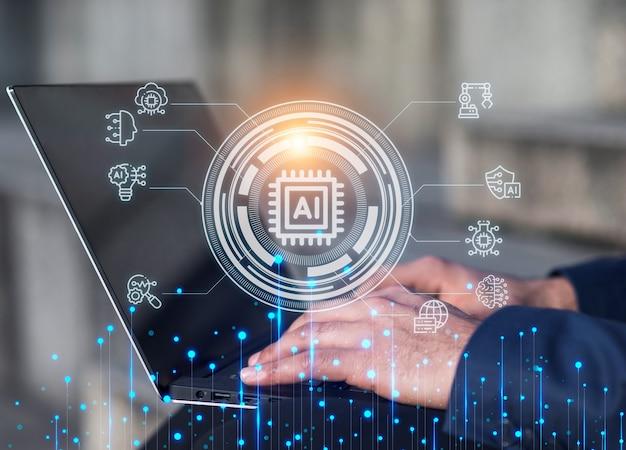
Artificial intelligence (AI) and machine learning are revolutionizing data center operations with their ability to analyze vast amounts of operational data in real time. These technologies can predict equipment failures before they happen, enabling preventative maintenance that avoids costly downtime and excessive energy use. AI algorithms optimize energy consumption across the entire data center by continually adjusting cooling systems, power distribution, and server workloads based on current demand and other variables.
By identifying inefficiencies and automating adjustments, AI and machine learning significantly enhance data center energy efficiency. For instance, Google reported using deep learning algorithms to reduce the amount of energy used for cooling its data centers by up to 40%. Beyond predictive maintenance and operational efficiency, these technologies can also guide data center design, suggesting layouts and configurations that maximize airflow and minimize energy consumption. The incorporation of AI and machine learning into data center management represents a forward-thinking approach to achieving sustainability goals through advanced technological innovation.
Energy Storage Solutions
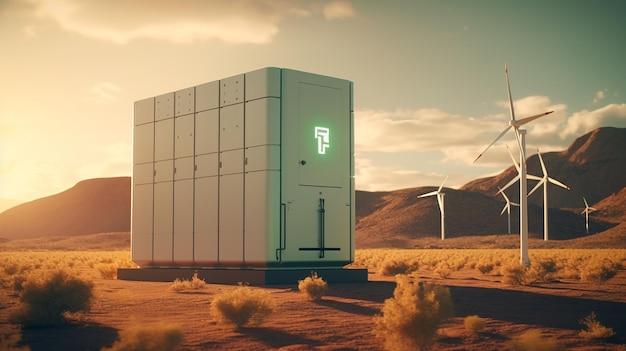
The integration of energy storage solutions within data centers is a key strategy for enhancing reliability and sustainability, particularly when paired with renewable energy sources. Systems like batteries and flywheels store excess energy generated during periods of low demand or high renewable production. This stored energy can then be used during peak demand times or when renewable energy generation is low, ensuring a consistent and reliable power supply. Energy storage helps mitigate the variability and intermittency of renewable energy sources, enabling a smoother transition to green power for data centers.
Energy storage systems also play a crucial role in energy arbitrage, allowing data centers to take advantage of lower electricity prices during off-peak hours by storing cheap energy to be used during peak pricing periods. This can lead to significant cost savings and further incentivize the adoption of renewable energy. Additionally, in the event of power outages, energy storage provides a critical backup power source, increasing the resilience of data center operations. The strategic use of energy storage technologies supports the broader goal of creating sustainable, efficient, and resilient data centers.
Carbon Offsetting and Emission Reduction Strategies

Data centers are increasingly adopting carbon offsetting and emission reduction strategies to combat their environmental impact. Carbon offsetting involves investing in environmental projects that reduce greenhouse gas (GHG) emissions elsewhere, such as reforestation or renewable energy projects, to balance out the emissions produced by data center operations. This approach allows data centers to take responsibility for their carbon footprint, contributing to global efforts against climate change. Additionally, purchasing renewable energy credits (RECs) is another method for data centers to support renewable energy development and claim the environmental attributes of the generated power, further offsetting their carbon emissions.
Emission reduction strategies within the data center itself include implementing energy-efficient technologies, optimizing IT and cooling systems, and choosing sustainable materials and practices throughout the data center lifecycle. These direct actions reduce the actual emissions generated by data center operations, complementing the indirect benefits achieved through carbon offsetting. Together, these strategies demonstrate a comprehensive approach to sustainability, showcasing data centers’ commitment to environmental stewardship and their role in driving forward a greener future for the technology sector.
The Environmental Impact of Green Data Centers
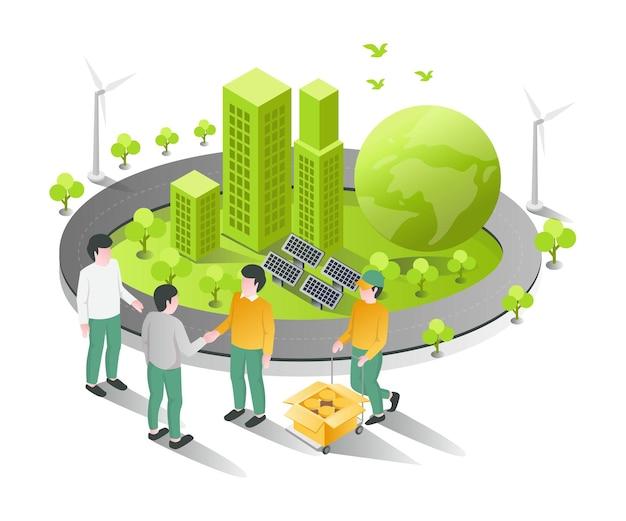
Green Data Centers are not just a buzzword; they’re making a tangible difference in the fight against climate change. By leveraging renewable energy and cutting-edge technologies, these eco-friendly facilities are significantly reducing carbon emissions and environmental pollution. According to recent studies, Green Data Centers can reduce energy consumption by up to 40% compared to their traditional counterparts, making them a sustainable choice for businesses worldwide.
Embracing a Sustainable Future
In conclusion, Green Data Centers are not just a trend; they’re a necessity in today’s environmentally conscious world. By harnessing renewable energy sources, optimizing hardware, and leveraging cutting-edge technologies, these eco-friendly facilities are paving the way for a more sustainable digital future. As businesses and individuals alike prioritize sustainability, Green Data Centers offer a viable solution to reduce carbon emissions and mitigate climate change. Let’s embrace this green revolution and build a brighter, greener tomorrow for generations to come.
Explore MSys Technologies’ Green Data Center Initiatives
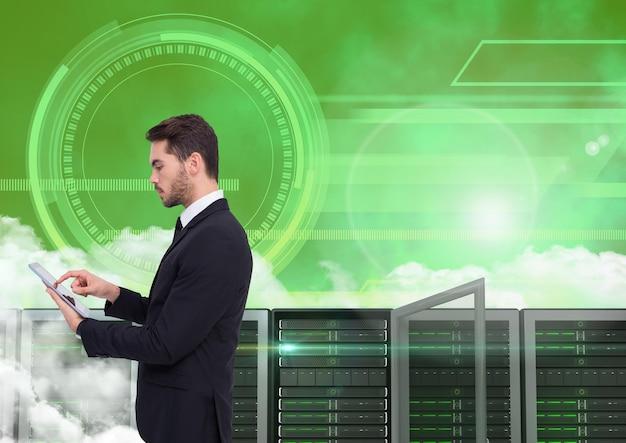
Ready to embrace sustainability and revolutionize your data center operations? Explore MSys Technologies’ Green Data Center initiatives today and join us in building a greener, more sustainable future for all. Visit our website to learn more about our innovative solutions and how we can help your business thrive in the era of sustainability. Together, let’s make a difference and create a world where technology and the environment coexist harmoniously.
